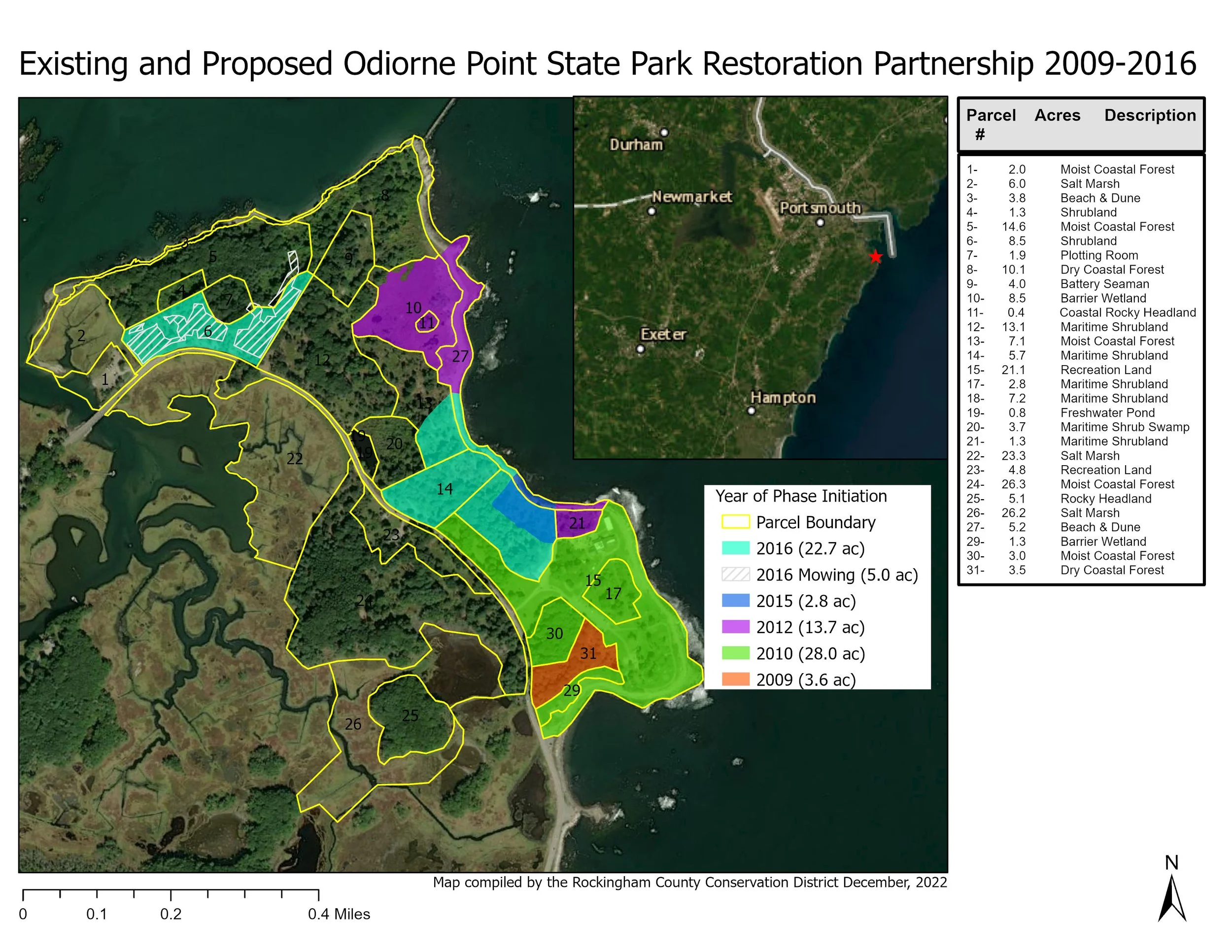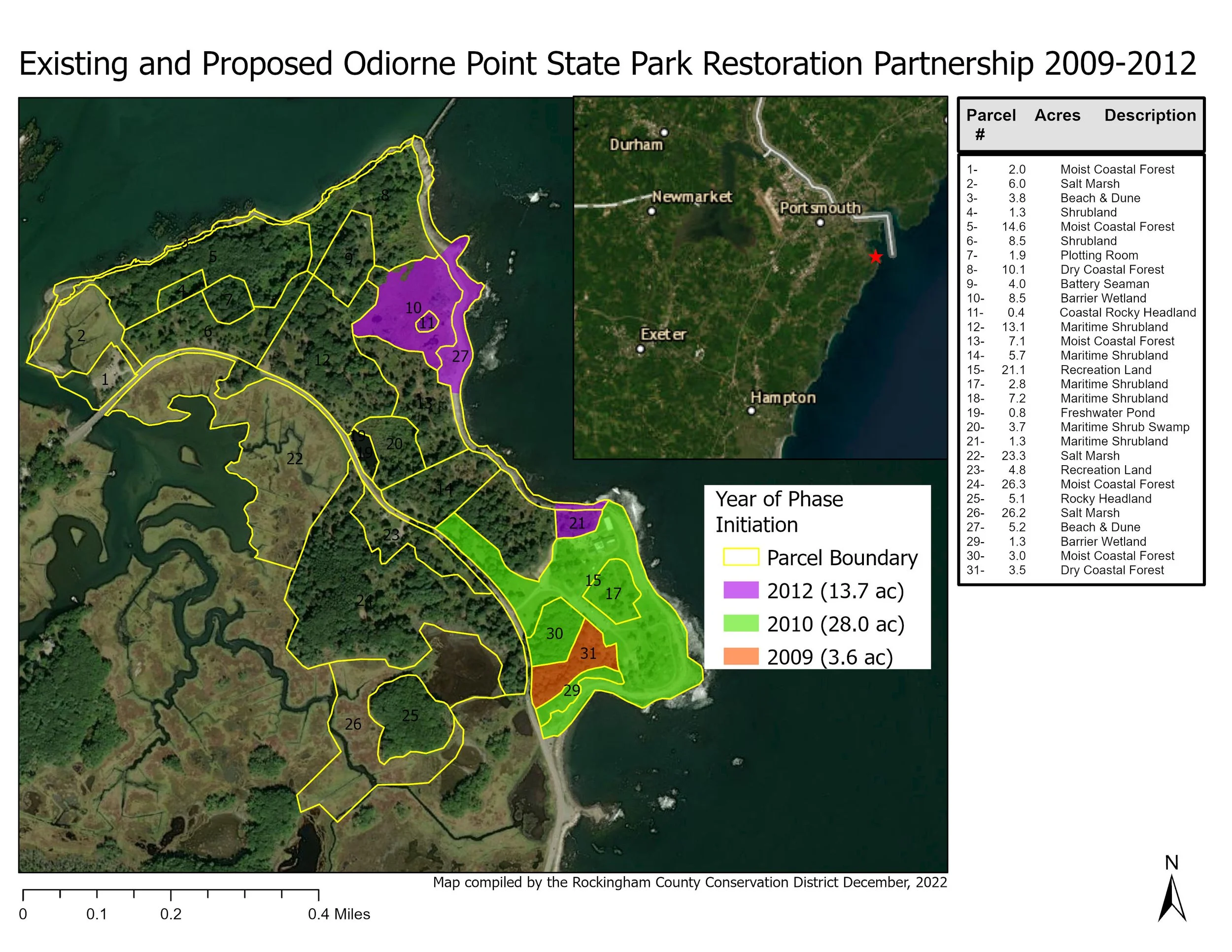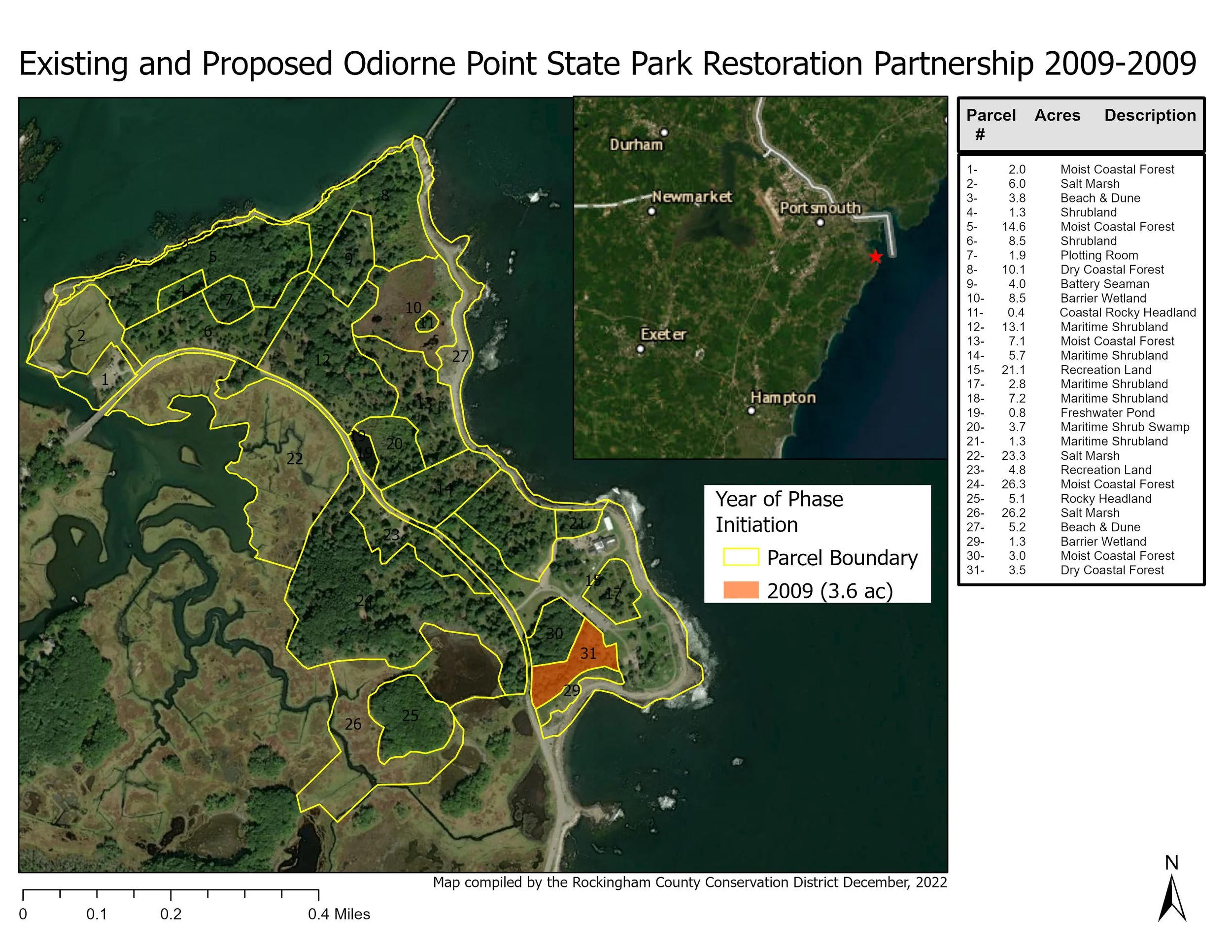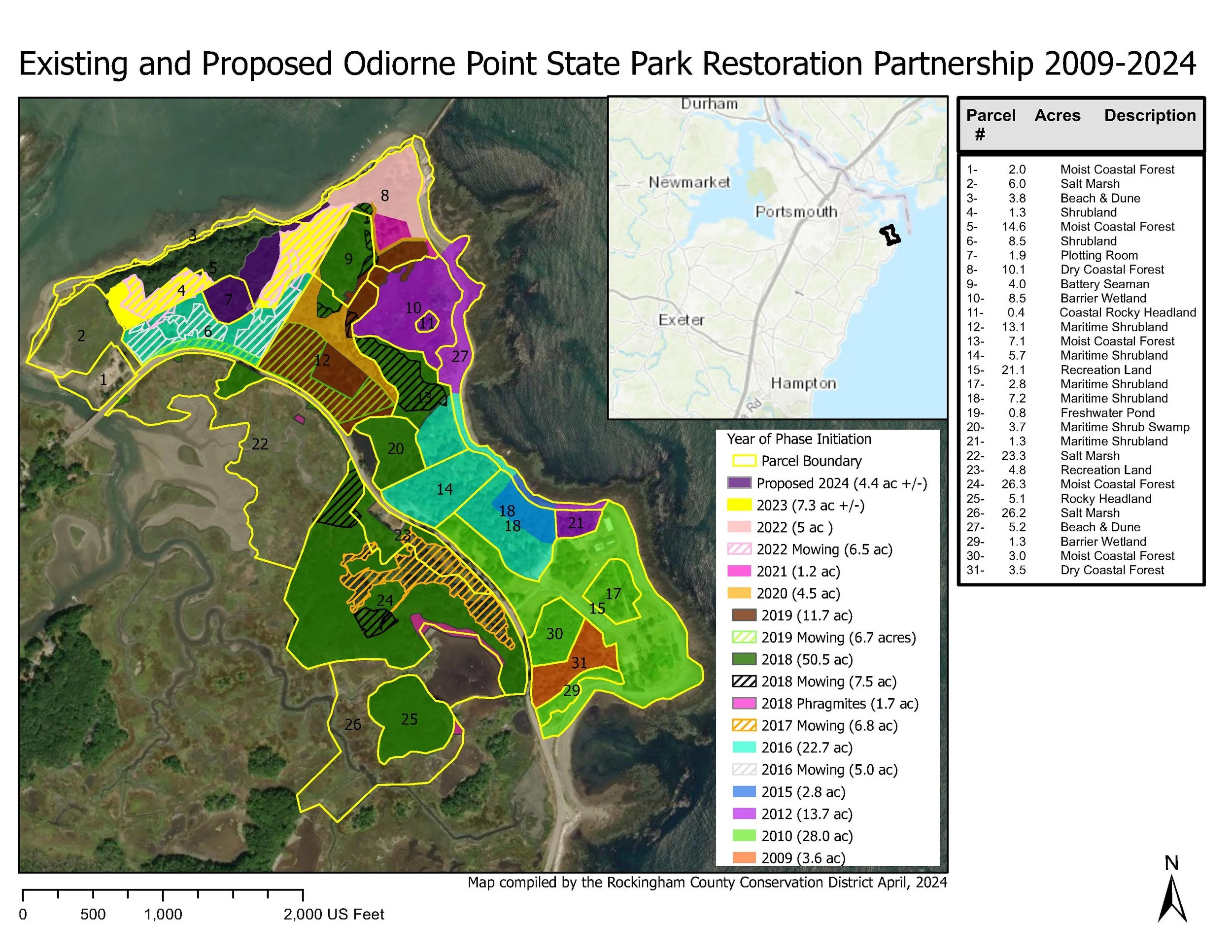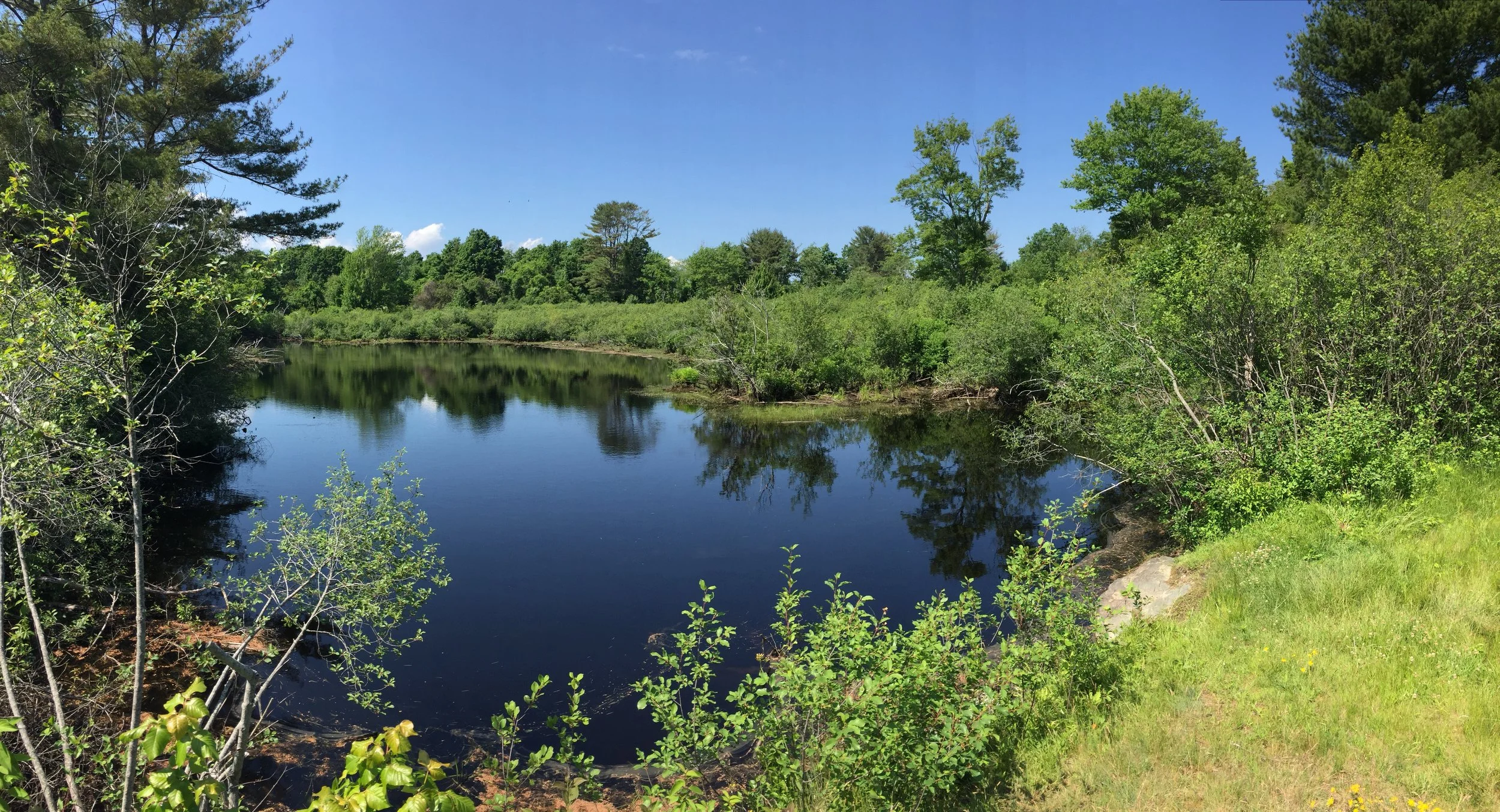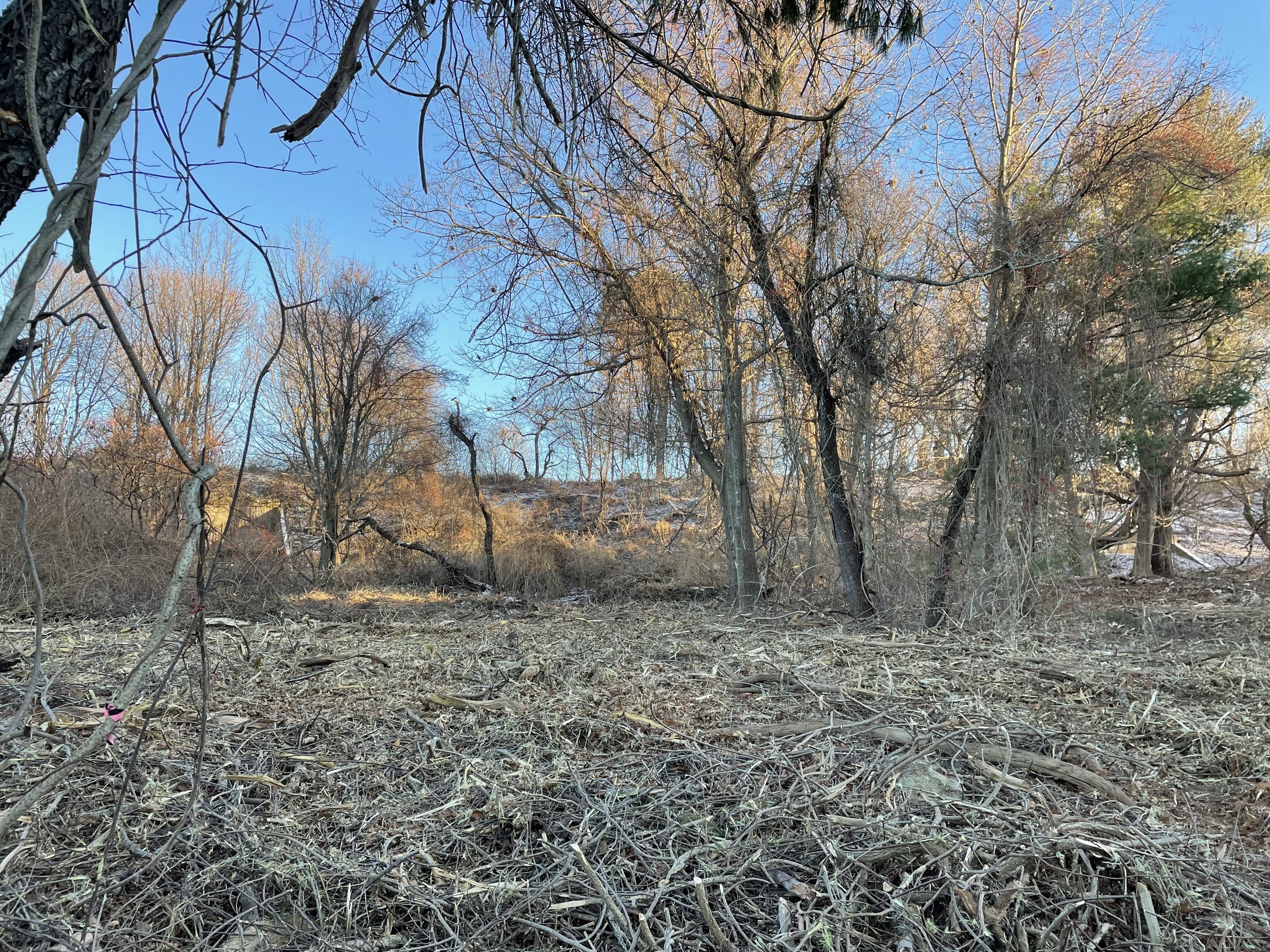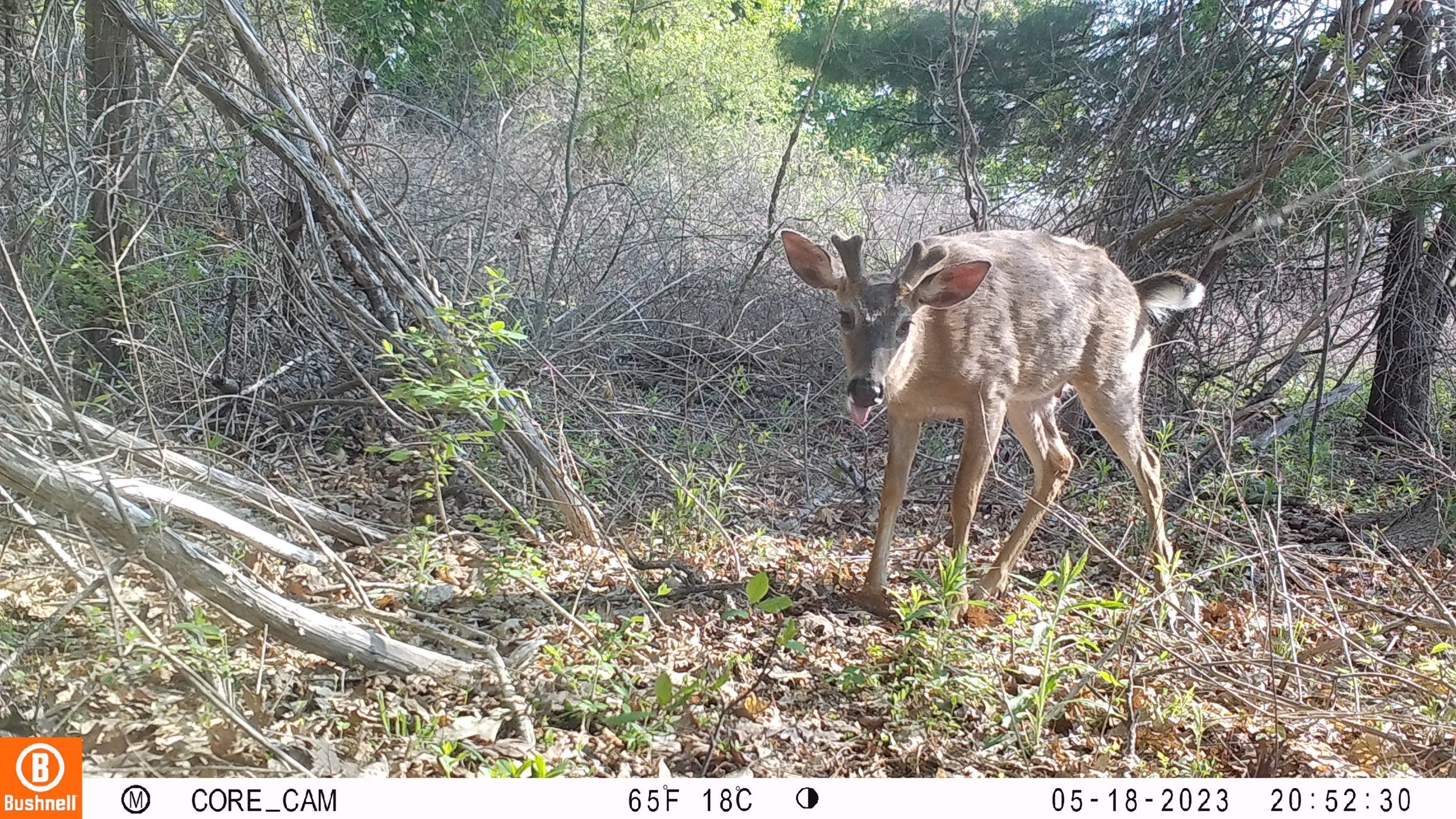
Invasive Plant Control
Odiorne Point State Park
Over the past 350 years, native ecosystems at Odiorne Point State Park have been significantly degraded by human activity. This disturbance has facilitated the spread of non-native invasive plant species, which now pose one of the most serious threats to the park’s coastal habitats. Odiorne is home to some of New Hampshire’s rarest native ecological communities, including dune complexes, overwash coastal marshes, and maritime cobble beaches. Since 2010, the Rockingham County Conservation District (RCCD), in partnership with the New Hampshire Department of Natural and Cultural Resources (DNCR) and other collaborators, has been working to restore these critical ecosystems

Utilizing the information collected from the Odiorne Point State Park Invasive Species Management Plans the RCCD began restoration efforts in 2010 with a 2.8 acre pilot project that would serve as a model and learning tool for invasive species control and natural ecosystem restoration in the park as well as a catalyst for future restoration funding and volunteer recruitment within the entire 334 +/- acres. What started as a pilot project has since evolved to include over 120 acres of the park under active restoration.
Follow the Progress
Restoration Photos by Field
Invasive Plant Control Methods & Integrated Pest Management:
RCCD utilizes Integrated Pest Management (IPM) techniques for the control of invasive plant species at Odiorne Point State Park.
What is Integrated Pest Management?
IPM is an ecosystem-based strategy that focuses on long-term prevention of pests or their damage through a combination of techniques such as biological, chemical, mechanical and cultural control.
The principles of IPM include:
Identify pests, their hosts, and beneficial organisms before taking action.
Establish monitoring guidelines for each pest species.
Evaluate and implement control tactics.
Monitor, evaluate, and document the results.
Why is IPM Important?
Minimizes Chemical Use:
Reduces Environmental Impact:
Promotes Long-Term Solutions:
Focuses on long-term prevention and control, rather than short-term fixes, which can lead to resistance in pests and environmental damage.
Enhances Effectiveness:
IPM combines various methods, leading to more effective and sustainable control
Reduces Costs:
By optimizing control strategies and reducing unnecessary applications, IPM can lower overall costs associated with pest management.
Educates and Engages:
Promotes understanding of invasive species and encourages collaboration among communities to effectively manage and monitor pest populations.
Invasive Plants Found at the Park
IPM Practices Implemented:
Mechanical Control: Mowing
Using an excavator with a mounted drum mower, areas in the park with some of the most dense invasive plant populations have been mowed.
-
Allows appropriate access for habitat restoration
Promotes rapid regeneration of certain native plant species such as sumac, dogwoods and willow
Creates early successional habitat critical for many species such as the New England cottontail, ruffed grouse, and American woodcock
Removes excess bittersweet vines that are weighing down and strangling native tree species
Removes biomass of invasive infestations
Opens up the area to allow native species regeneration and supplemental native plantings where appropriate
Native Species Planting & Seeding
Active planting of native species is and has been completed in a variety of coastal habitat types throughout the park in an effort to promote the establishment of diverse plant communities. Historical plant species data is utilized in determining what plants were native to Odiorne Point prior to the monoculture of invasives, and is used as a guide for current restoration plantings.
-
Greater diversity means greater resilience to change or disturbance
Erosion control
Increased water quality
Supports a greater variety of wildlife species
Increased soil carbon storage
Healthy soils
Mechanical Control: Hand Pulling
Hand pulling can be an effective method for controlling certain invasive plant species—particularly those that do not readily regenerate from root or rhizome fragments, such as honeysuckle and buckthorn. While this approach is labor-intensive and best suited for small infestations, it offers a valuable opportunity to engage volunteers. By working directly with plants, participants gain hands-on experience and a deeper understanding of invasive species and their impacts on local ecosystems.
Chemical Control
RCCD uses a combination of selective herbicide application techniques including cut stump, basal bark, swiping and low volume foliar applications to target invasive plant species.
-
Targeted and Effective:
Herbicides can be specifically chosen to target invasive species, ensuring the desired plants are not affected. They can also kill the root system, preventing regrowth, which is crucial for many invasive plants that can regenerate from roots.
Cost and Labor Efficiency:
Compared to mechanical removal, herbicides can be more cost-effective and require less labor, especially for large infestations.
Other Means of Control are Ineffective: Some invasive plants, like those with extensive root systems or that reproduce vigorously from root fragments (e.g., Japanese knotweed), are very difficult to control effectively through other means. Certain methods of control such as mowing can actually worsen infestations.
View Some of The Latest Press Releases:
Restoration of Coastal Forest and Shrub Habitat And Pollinator Enhancements at Odiorne Point State Park
Restoration of Shrubland and Maritime Shrubland Habitats at Odiorne Point State Park
Odiorne Point State Park: A Decade and More Ecosystem Restoration- Progress Update Winter 2022-2023
Want to learn more about invasive plants?
Check Out Other Projects at Odiorne





